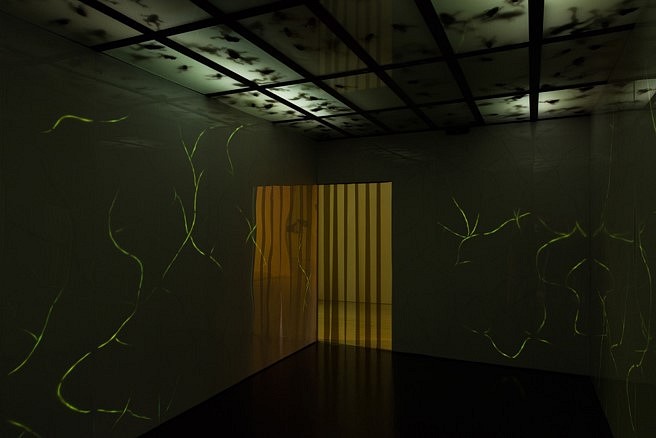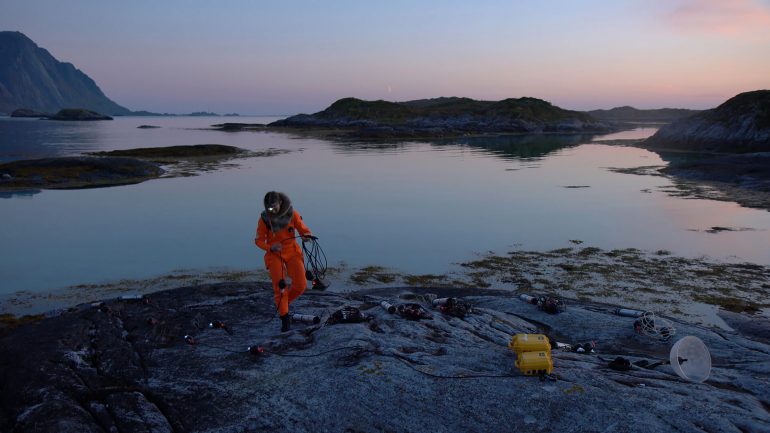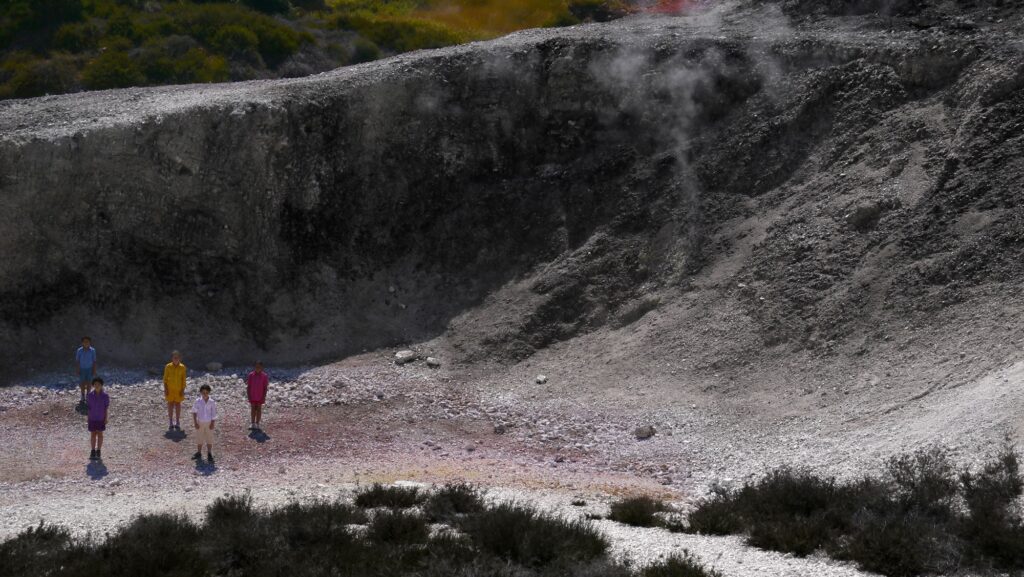Guest editor: Manuela Zammit
Deadline: 31 August 2023
Published: February 2024
“From the continuous flow and punctuations of the audible, a range of capacities and potentialities may be found. In particular, the shifting flows of vibrancy and reverberance that often shape our interactions with the world and with others…”
Brandon LaBelle, Sonic Agency: Sound and Emergent Forms of Resistance.
We are thrilled to announce a call for papers for the upcoming issue of Kunstlicht dedicated to the theme of reverberant ecologies. We are looking forward to explore the interconnectedness and interdependence of ecological systems through the affordances of sound and sonic practices.
In the face of a rapidly unfolding climate catastrophe and widening social and economic inequalities, we find ourselves in urgent need of alternative ways of relating to ourselves, other humans, non-humans, and the material world at large. Western ocularcentric systems of knowledge (including artistic ones) have for a long time relied too much on sight as the privileged sense through which to engage with the world. In their quest for enacting ways of relating otherwise, contemporary artists have been tuning into the world’s vibrational energy.
Often informed by methods and theories from sound studies, eco-acoustics, and acoustemology, among other fields, artists have been working with the fluid materiality of sound – or what Salomé Voegelin has termed as “sound’s invisible formlessness” – to understand how sonic waves actively produce material reality, and to access dimensions of reality that continuously elude vision. Sound artist and theorist Brandon LaBelle has observed that, “As forceful movements – of rhythmic and resonant intensities, of vibrational and volumetric interruptions – sound works to unsettle and exceed arenas of visibility by relating us to the unseen, the non-represented or the not-yet-apparent…” In other words, becoming more attuned to the sonic dimension of our material reality, is one way to rethink specific assumptions about aspects of material reality that rely on sight, such as culturally-constructed delineations of material entities. Artistic engagement with sound and its affordances has indeed been shifting the focus from practices of representation to practices of mediation, and from practices of looking to those of (deep) listening and attunement.

For instance, Dora Budor’s Adaptation of an Instrument (2016) is a dynamic environment where the audience’s moving bodies within the art space animate the amphibian rain scene from the 1999 film Magnolia that is installed in the ceiling. In this work and various others, Budor employs vibrational frequency, including the volume of the audience’s voice, as an affective force that induces a performative (re)action in the work. Here, the traditional subject-object relation is subverted by establishing an atmospheric relation between the audience and the artwork, where the air functions as a transformative space that turns sound into light or movement.

In Acoustic Ocean (2018), Ursula Biemann sets out to explore the sonic ecology of marine life. Equipped with all sorts of hydrophones, parabolic microphones, and recording devices, she amplifies her sensing abilities and tries to detect underwater acoustic forms of expression on the Lofoten Islands in Northern Norway. What can the sounds and infrasounds of marine life tell us about environmental health, natural rhythms, and our future on planet Earth that observable phenomena cannot? How does listening – to both that which is audible and that which sounds beyond the human sensorial range – possibly change our relationship with other sounding beings and so-called silent subjects?
In turn, Mikhail Karikis’ Children of Unquiet (2013-14) explores the potentialities opened up by sound-making referred to by LaBelle, by orchestrating a children’s aural and physical take-over of a deserted former workers’ village situated in the Devil’s Valley in Tuscany. As the children laugh, play, and read out loud amid their surroundings, their sonic intervention is both an individual and communal form of expression that challenges a failed narrative of industrial modernism and evokes other possible, and perhaps more emancipatory futures.

Because sound is a fluid material and unfolds in the space between entities across various scales, reverberation links them into an entangled and situated existence. Reverberation points to the liveliness and eventness of all beings; to a corporeality that exceeds the sounding body, and persists across time and space. This emphasises the notion that earthly life is a matter of dynamic processes of co-becoming and material interchange. As we intently and unintentionally vibrate with and through other beings, our collective reverberation sonically and symbolically confounds the traditional Western subject-object relation by alerting us to the ways in which we are simultaneously agent and acted upon. Reverberation reveals the desired and the troublesome, the directed and the diffused, and the unexpected and unknown ways in which everything is spatiotemporally and intimately bound. Reverberation is therefore not only a physical phenomenon that describes the persistent quality of sound in space, but also a valuable conceptual tool for thinking about the long-lasting impact of activated materialities.
Artist and self-proclaimed ‘incarnated agent of healing’ Tabita Rezaire has poetically affirmed that “sound is the creative force behind our manifested reality. Thus from the cosmic primal sound, all material form – as in matter – was birthed and still keeps birthing. Everything has a vibratory frequency, even if inaudible (…) The human pursuit is then to find that sound and resound in that sound, so as to vibrate in unison with the vibratory frequency of infinity.” Rezaire wrote these words in the context of the primarily human endeavour of decolonial healing, but they could just as well apply to all animate and inanimate beings. Vibration, then, is a process of becoming in the biological, social, and cultural sense.
In this issue of Kunstlicht, we invite you to think with us about reverberation in an expanded manner in order to explore the relationality of sound and sonic practices, especially (but certainly not limited to) those within the contemporary visual arts. We find ourselves questioning: what does it mean to state that ecologies are inherently reverberant things? And that reverberant bodies are affective bodies? How can we conceive of reverberation as a creative and transformative force? What are the possible ethical, political, aesthetic, and epistemological implications of being more attentive to the ways in which bodies extend themselves towards each other and become entangled through their vibrational energy? And how could being more receptive to other bodies’ reverberance help us address shared longings, navigate the ecological crisis, and form new “vibratory models of alliance” against social injustice?
We invite scholars, artists, listeners, musicians, sound-makers, and practitioners from various disciplinary backgrounds and from all stages in their academic, creative or professional practice to think with us about these questions and submit a proposal for essays, interviews, poems and other poetic and experimental texts, prose, scores, playlists, and visual or aural works that vibe with the theme of reverberant ecologies.
Proposals (200-300 words) with attached résumés and related image material can be sent to redactie@tijdschriftkunstlicht.nl by no later than August 31, 2023. Selected contributors will be notified shortly thereafter and invited to write a 2,500/3,000-word essay (excluding (foot)notes), or to submit an artistic contribution.
Please note: Contributors who publish in Kunstlicht will receive two complimentary copies. Kunstlicht is a volunteer-run academic journal and is unable to provide an author’s honorarium. Three years following publication, essay contributions will be uploaded to the freely accessible online archive.
Manuela Zammit is a contemporary art historian, editor, and critic based between The Netherlands and Malta. She has recently graduated with a Research Master in Critical Studies in Art & Culture from Vrije Universiteit Amsterdam. Her thesis titled “Posthuman Corporealities: Encounters Within and Without the Self” focuses on contemporary artistic engagements with feminist (re)theorisations of the body and subjectivity. While her research interests are broad and ever-changing, her ongoing inquiry is centred around expanded notions of embodiment and relationality in contemporary art practices, particularly within the contexts of ecology and new media. She previously completed a MFA in Contemporary Curating at Manchester Metropolitan University and is a regular contributor to the Dutch contemporary art magazine Metropolis M. She is also part of Kunstlicht’s editorial board.

